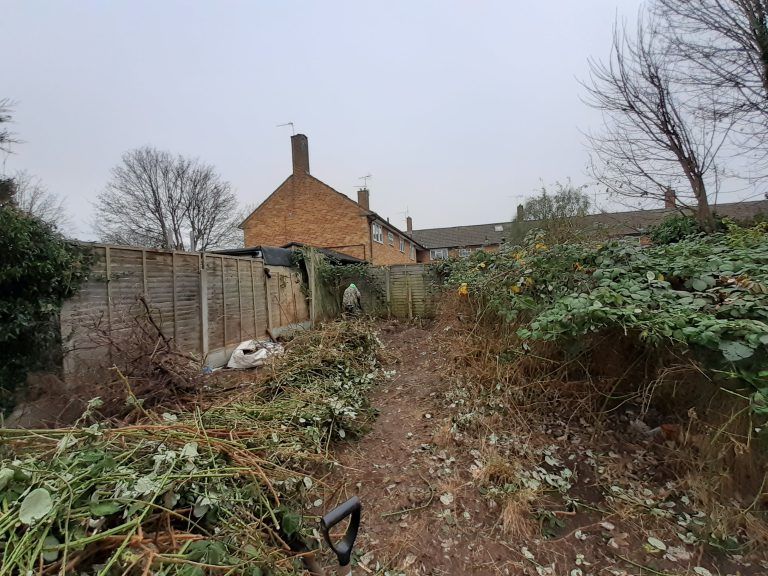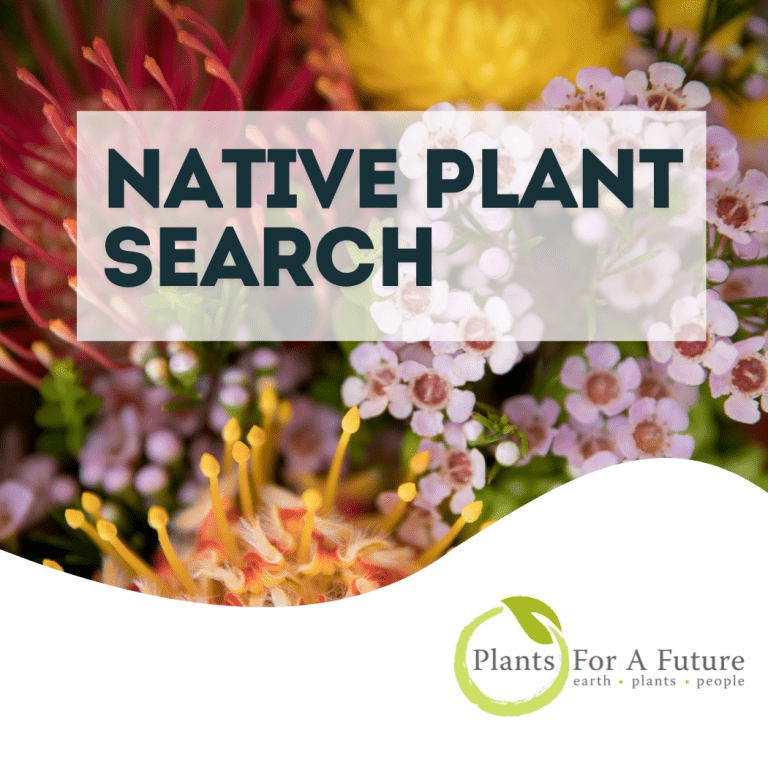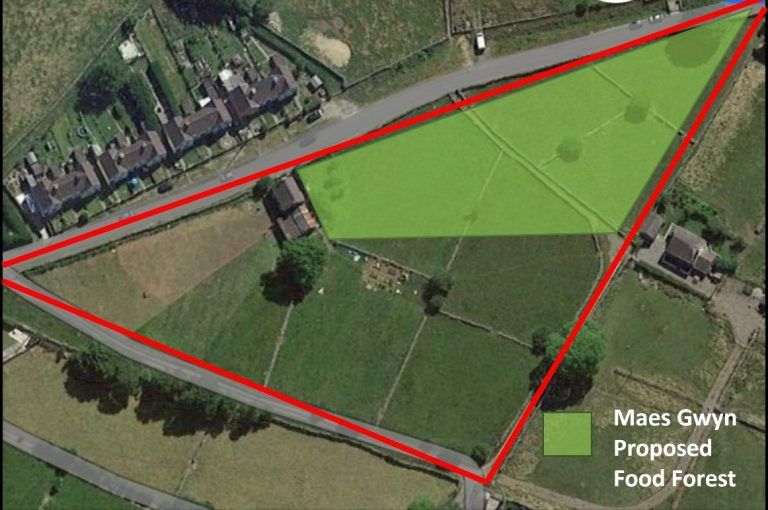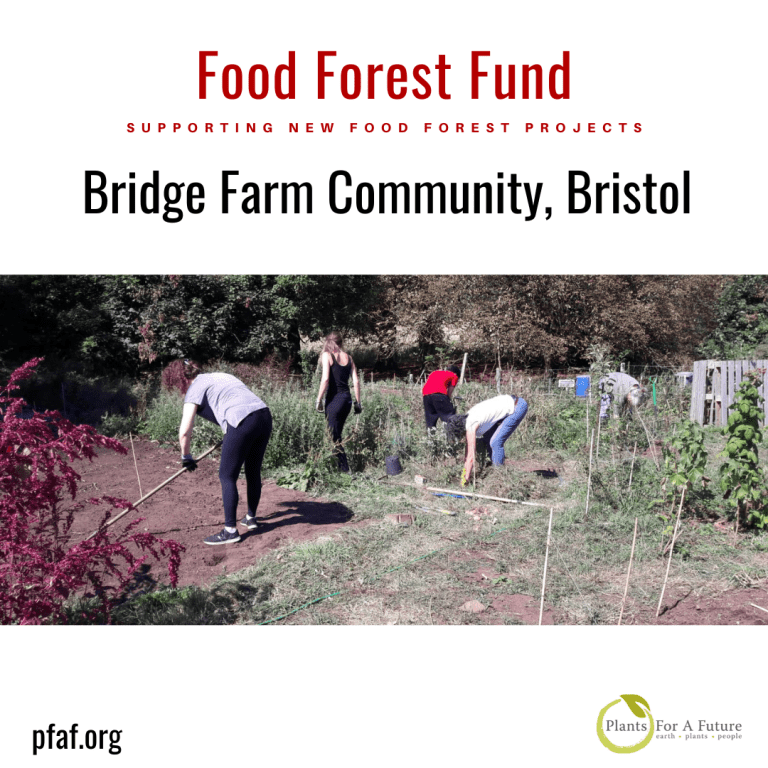October 2021 to January 2024
by David Gearing
The Harmony Garden is a 500 sq m site surrounded by rows of houses and flats in Cheshunt, Hertfordshire. The project is facilitated by Wenderlynn and Iain Bagnall of Wyld Edges CIC, a small social enterprise offering permaculture education and regenerative practice for gardening and personal resilience. PFAF has been pleased to provide funding to support this interesting, well-documented project.
Wenderlynn and Iain have used their skills and experience to work with the local community to provide a space for education and social interaction. In 2021 they were offered a lease on the site by B3 Living, a local housing association. The site had been used to dump all kinds of stuff and was overgrown with brambles and nettles. With the help of volunteers they cleared the area, retrieving approximately 10 tons of waste.
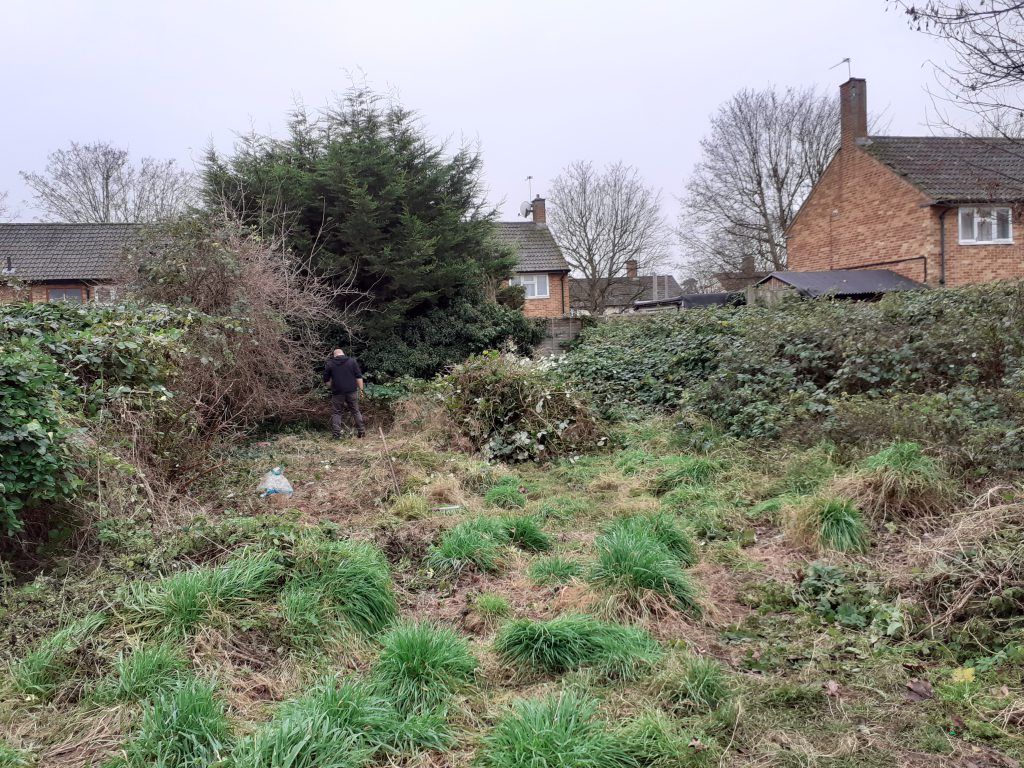
B3 Living provided funding for a shed, compost and basic resources, and also donated second hand tools. Their contractors, Chigwell, paid for a fence to help prevent any further waste dumping. Due to the amount of waste discovered, the project leads had the soil tested for contamination. There were heavy metals, but also polystyrene, which can affect soil life, killing worms. When they tried to remove the polystyrene it broke into small particles, so it was accepted that food couldn’t be grown in that area, and instead it was used to house a greenhouse and work bench, and later a compost toilet will be installed. In order to prevent the polystyrene particles spreading, the area was partitioned off with a wooden barrier and by planting willow.
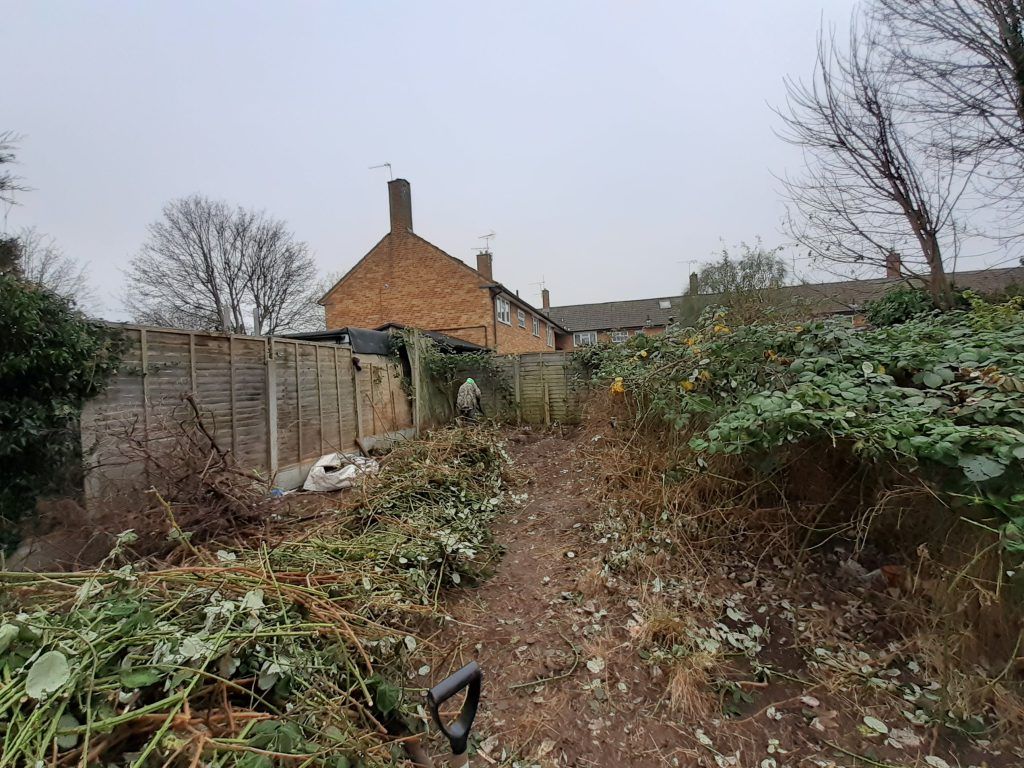
In March 2022 test pits were dug and it was found that the levels of heavy metal residues, particularly lead and zinc, were unsafe for food growing. Removing and disposing of the top two feet depth of soil, as recommended, would have just moved the problem elsewhere. So they looked into phytoremediation, a plant-based solution, where plants called hyperaccumulators, are used to draw heavy metal (such as lead) contamination from the soil. There are 400+ species known to have this ability, including cabbage, beetroot, carrots, potatoes, garlic, amaranth, lucerne and golden rod – but their research indicated that sunflowers were particularly effective. It was necessary to dig over the soil several times to remove pieces of metal and glass before sunflowers could be planted. Then in order to repair the soil and build nutrients, the areas concerned were sheet mulched with cardboard, old compost provided by a local resident, straw and dead sticks. This was watered in thoroughly and bamboo canes inserted to discourage damage by visiting local foxes. When this had decomposed, green manure was sown: mustard greens, phacelia, red and white clover, rye grass, buckwheat and lucerne.
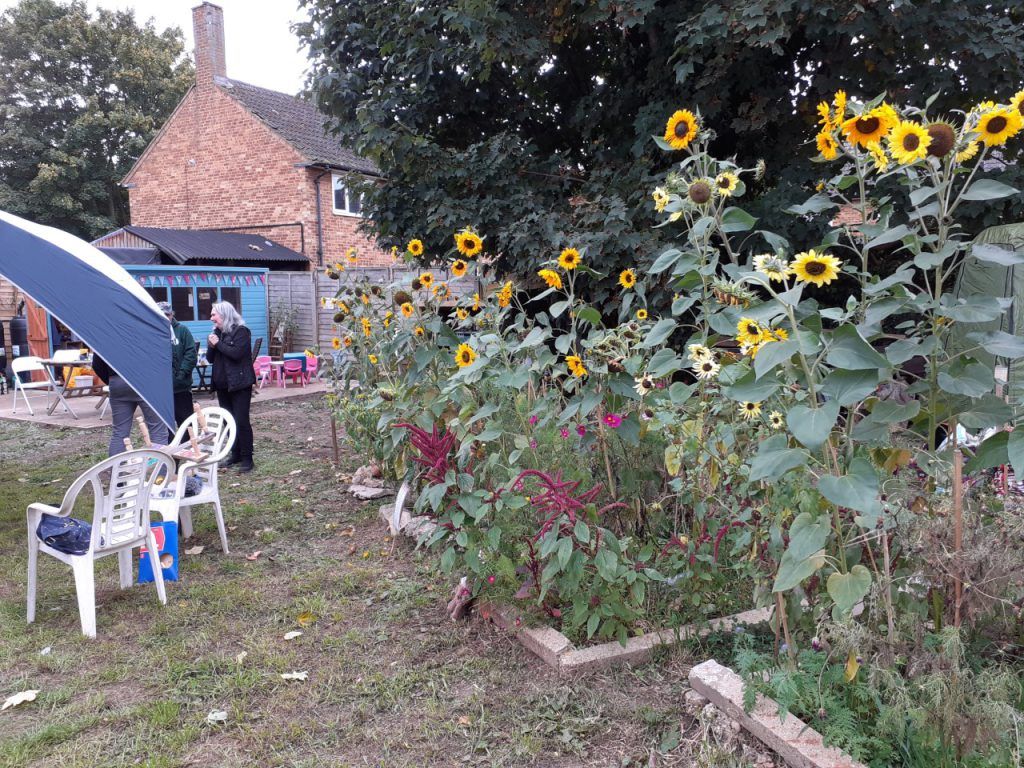
Meanwhile it was decided to grow a mixture of perennial and annual food plants in raised planters and pots until crops could be safely grown in the ground. They planted tomatoes, wolf berry, thyme, rosemary, perennial rye, comfrey, wood sorrell, pinks, currants, rhubarb, oxalis triangularis, potatoes, cinnamon vine, sorrell, fennel, lemon balm, broad beans, dill, fennel, chocolate mint, yarrow, french beans, garlic, mange tout, cucumbers cherokee beans, amaranth (Hopi red), amaranth (grain), nasturtiums, parsley, strawberries, chard, nine star perennial broccoli, tree spinach.
In October 2022 further tests showed that the lead levels where sunflowers had been sown had dropped from 301mg to 250mg. In another area, using funding from our Food Forest Fund, perennials were planted along with sunflowers, and the levels dropped from 322 mg to 252mg. Later, in a third area, the contamination had dropped to 220mg, which is very close to an acceptable level for growing and harvesting food.
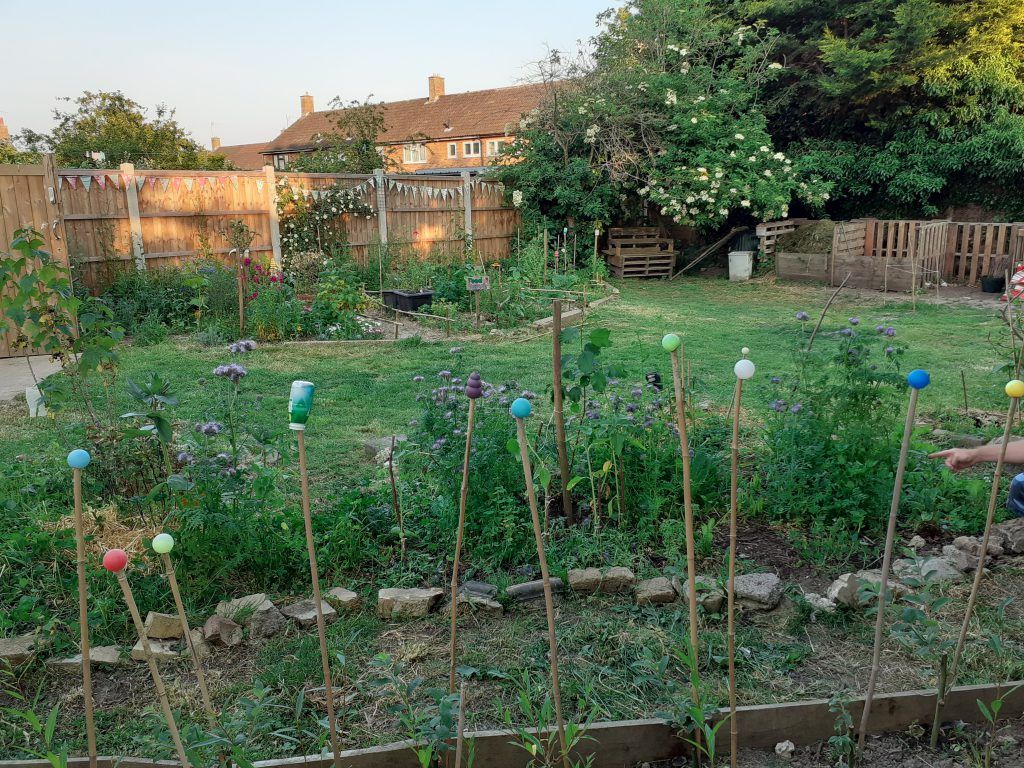
Generally the newly planted food forest has progressed well in beds adjacent to two existing elder trees, and additional perennials have recently been planted in the area next to a large pre-existing sycamore, effectively extending the food forest system across the garden. There is insufficient room for new canopy trees, but two fruit trees have been planted: a family apple tree (Christmas Pippin/James Grieve/Discovery), chosen to provide fruit for as long a period as possible – from August through to January, and a Jubilee plum tree, which is notably cold-hardy.
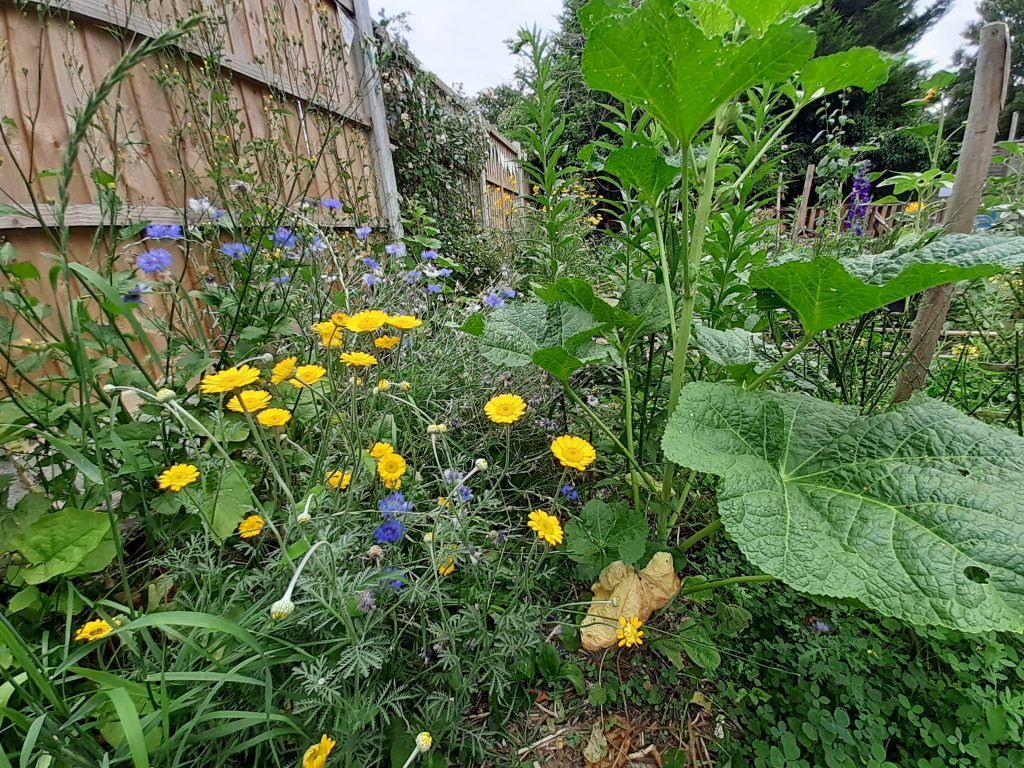
Plants in different food forest layers and performing different functions (e.g. nitrogen fixing, attracting pollinators, attractive colour) have been chosen to create guilds centred on the fruit trees and other key plants, and for shady areas around the larger pre-existing trees. For example, the guild around the apple tree comprises lavender, raspberry, broom, rosemary, sedum, chocolate mint, lupin, hollyhock, ground cover alpine and strawberry, pinks, scabious, tagetes, borage. Some plants grown in areas that could not be used for food have been used for other functions e.g. rhubarb for mordant and dyeing, and soapwort for its saponins.
One aim is to demonstrate how a successful food forest can be created in a small garden or allotment where planting larger trees is not an option, or where existing large trees shade a significant part of the available space. Redcurrants, blackcurrants, saskatoon, daylilies, swamp milkweed, Turkish rhubarb, cinnamon vine and hablizia have been planted in beds around and under the large sycamore – but unfortunately most suffered from the unusual heat and a lack of rainfall in 2023, when it became apparent that shortage of water is a limiting factor for the project.
There is no mains supply on-site so, even though much effort was spent physically carrying water from nearby properties to fill waterbutts, the planters dried out on several occasions, and priority had to be given to perennials in the ground, which generally survived well, helped by sheet mulching, with cardboard and straw and the use of green manures. Two 1000 litre containers have now been acquired, to augment the existing waterbutts. Time will tell whether this is enough: the trees and shrubs will now have had another year of root growth which should make them stronger. The soil appears to be a clay loam and very stoney, making it well drained. However, it can become compacted and hard in the summer if there is not enough moisture.
Until the project leads are happy that remediation is no longer necessary, the garden will continue to be heavily interplanted with sunflowers, in addition to amaranth and golden rod, which are also phytoremediators. Although these plants will compete with the perennial plants for nutrients, water etc, it is essential to reduce the lead levels, and they are confident that they can offset a significant amount of this negative effect, with the use of green manures such as phacelia and vetches, and ground covers such as strawberries and periwinkle, sedum, mints, and ajuga.
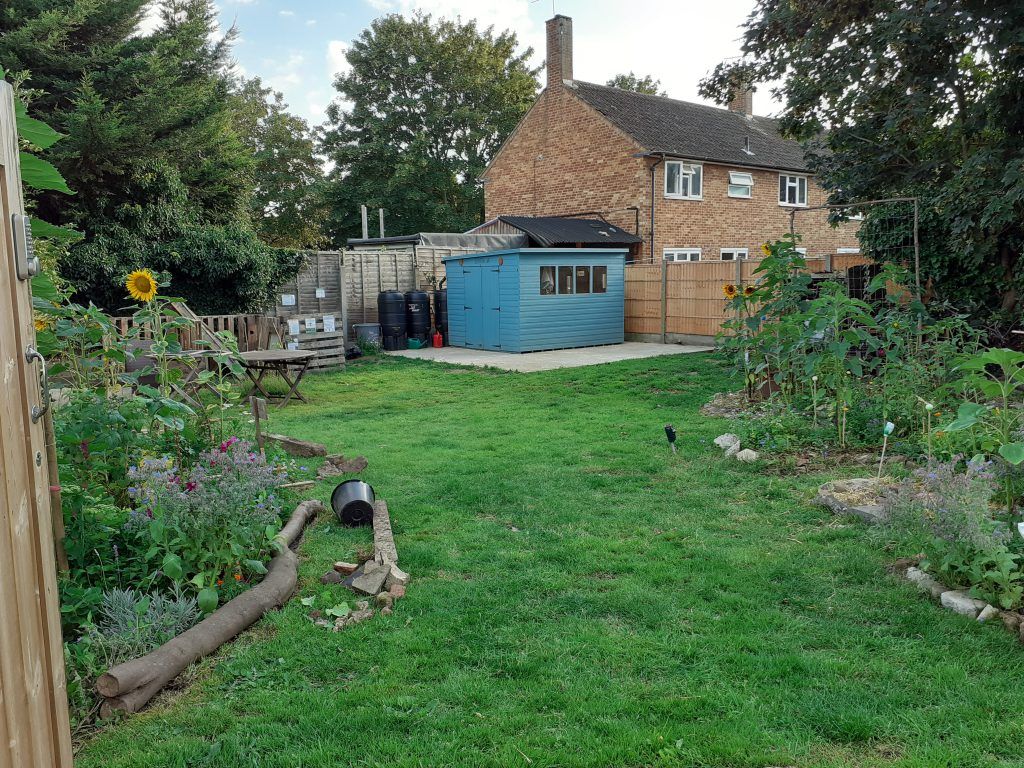
When soil contamination is no longer a restriction, additional perennials will be integrated, as Wenderlynn and Iain continue to research the best plants for the garden based on climate change and needs of the community. They aim to be able to fully harvest from all areas of the garden by summer of 2025, by which time it is hoped to be able to give a clearer picture of what the garden can produce, and provide indicators of the best approach to a food forest system in a small urban site.
This blog has been derived from a more detailed report available on the Wyld Edges CIC website at https://www.wyldedges.com/globalecologicalcrisis

